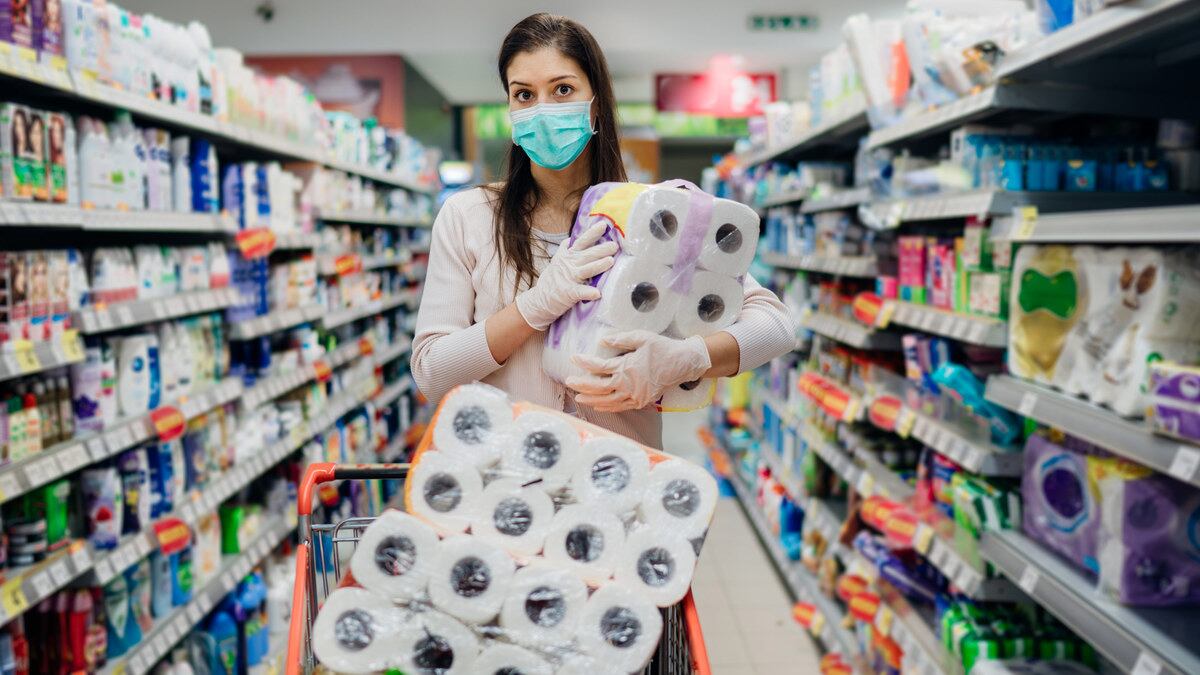Whether or not you believe in climate change, Mother Nature doesn’t care. She just does what she does. And she’s going to unleash wildfires, tornadoes, and hurricanes this season, regardless of the pandemic. Mother Nature doesn’t care that you’re in lockdown as flood waters rise. She couldn’t give a hoot that you’re scared to evacuate to a public shelter.
It’s your problem. Yours alone. And we all have to become preppers to power through cascading natural calamities. With local authorities stretched thin by COVID-19, we can’t count on them or FEMA to save us. Prepping makes you calmer because you have a plan and supplies. You’ll feel more confident to stare that earthquake down. And you increase your odds of survival.
Consider this. The past two years were among the worst on record for natural disasters in the United States. This summer augurs to be a knockout as well. The National Oceanic and Atmospheric Administration projects “above-normal” hurricane action over the Atlantic starting in weeks. California expects the annual blazes. Floods are forecast along the Mississippi.
And dams break, as we saw on May 19 in Michigan, forcing 10,000 people to flee their homes. Many evacuees, already hunkered down in a state ravaged by the virus, opted to sleep in their cars rather than risk infection in public shelters.
Consider all the freaky climatic stuff that’s going on these days that’s bound to take authorities by surprise. Brooklyn experienced a twister a few years back that blew off some roofs. Brooklyn! Bad events often have a domino effect, so your worst-case scenario is going to include the potential for more than one event, such as a tandem volcano and earthquake or hills denuded by wildfires triggering mudslides.
The unprecedented health emergency of COVID-19 makes dealing with one catastrophe mind-bending, let alone two or three. Even if resources were not depleted, emergency responders have never dealt with anything on this scale. Social distancing has hobbled training to fight wildfires on the West Coast. Firefighters must work farther spread out from each other instead of the typical tight teams.
Elsewhere, humanitarian resources have been diverted to manage the coronavirus. Nonprofits all over the country are maxed out. Some have laid off staff and run coffers dry. Shelters will have to consider spacing people six feet apart, which will mean fewer people can stay there. Ask yourself: should I need a doctor, where would you seek medical help? I live in viral New York City, so damned if I’m going to a hospital. There’s a big risk of infection.
That’s why I’m sounding the alarm: Become as self-sufficient as possible. Think this through now to avoid feeling frazzled when the inevitable hits.
I’m not suggesting we become survivalists who hoard grain and dig bunkers. l’m a diminutive 62-year-old who lives in Manhattan. I don’t have a wind-powered farm. I don’t hunt for dinner. I don’t sew my own clothes. I do, however, have a month’s supply of food, wipes, gloves, sanitizer, and masks in my basement. I have a medical kit and know how to use it. I had all those things before the pandemic began, and I will continually top it up until a vaccine is found. You should, too.
I’m talking about sensible preparation. Download the FEMA emergency app and ask local authorities about evacuation routes and emergency contact numbers. Buy a hand-cranked NOAA radio with a USB charger for smartphones. The crank powers up the radio’s internal battery so you won’t need batteries. Lack of communication is one of the most unsettling aspects of disasters and being able to get information and call for help is critical. Consider buying or renting a satellite phone if there’s a risk of power or cell outages.
Amass supplies for at least two weeks and pack a go-to bag that includes your personal PPE for COVID-19: masks, gloves, sanitizer, etc. Make copies of all important documents and store them in a plastic folder. Keep a full tank in the car.
If authorities say evacuate, go. Don’t be one of those people who refuse to leave their homes in a category 5 hurricane and then waste valuable resources being rescued. That puts a strain on emergency responders who should be saving the lives of sick or elderly folks who truly couldn’t get out. Once you’ve figured out where to go, discuss this evacuation plan with your family and the kids’ school as well as where to go in case you can’t contact one another and not everyone can reach that spot.
If you want to skedaddle out of town, check with cousin Lucy beforehand to confirm that you can crash at her house for two weeks of quarantine. (And ascertain that Ben the cat is truly welcome, too. Courtesy goes a long way when you’re camping in someone’s living room for an extended time.)
Here’s my strategy. I have the New York City emergency alert app and have identified the nearest shelter. (We lack an out-of-town refuge, as well as a car.) It’s a 10-minute walk from the house, which is doable in rubber boots in a foot of water. We asked the neighbor to cut down an ominously swaying branch that could crash onto the house in a gale. (I’m still waiting, Mister, in case you’re reading this.)
We just replaced the aged weather radio; it was so worn out that a wire served as the antenna. We updated our forehead flashlights to lighter LED models with longer battery life. We swept gutters, put $5,000 in the fireproof safe and are contemplating getting a pump for the cellar. We cleaned the sleeping bags and refueled the propane camping stove. We checked the house valves in order to shut off the water and gas.
That’s the gear. I’m working on staying fit. Weight training and eating properly bolsters your immunity from disease and helps you drag survivors from a burning building. Apropos, every individual over the age of 12 should take an emergency first aid course. I do a refresher every year, to keep the skills fresh. Learn how to set a broken leg and staunch bleeding. Learn how to treat a burn. You may be alone for hours waiting for an EMT.
This may seem overwhelming, but, believe me, it becomes second nature with practice. I learned the value of prepping 20 years ago when I worked as a foreign correspondent in places like Sudan where people died of starvation or had no plumbing. I relied on satellite phones and routinely packed MREs for trips where food was in short supply. I took bucket baths. (I also recommend vodka shampoos—great for sparkling pores and hair.)
I always carried extra cables and batteries and chargers. And cash, because the banking system failed or never worked to begin with. I carried enough medications like antibiotics to fill a Rite Aid. In Russia, I toted an avoska (“just in case” bag) when the economy collapsed in 1998. Shops ran out of staples, so I was always looking for depleted items.
My husband and I transported these habits when we moved to Harlem 20 years ago. People thought we were nuts. What could possibly happen here? A few friends got my drift after Hurricane Sandy flooded tracts of the city. But it took a global pandemic and quarantine and economic ruin to change their minds. While everyone else panicked over empty supermarket shelves, we had a nice smorgasbord in the basement.
Mother Nature is preparing. You can too.
—Judith Matloff teaches crisis reporting at Columbia’s Journalism School. She just published a manual for all hazards, How to Drag a Body and Other Safety Tips You Hope to Never Need.






